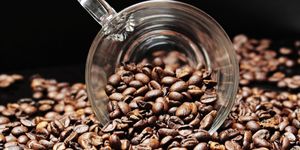Nanomesh Development Advances Drug Delivery's Fight Against Antibiotic-Resistance
As concern over medication-resistant bacteria grows, researchers at Flinders University have now fabricated nanomeshes as an effective drug delivery method for the fight against antibiotic-resistance. They used two antibiotics, Colistin and Vancomycin, to study the effectiveness of the nanomesh over a course of a 14 day period. The nanomesh was developed using electrospinning with parameters and contains fibers 200 nm in diameter.
Learn more about antibiotic resistance:
"In order to deliver the antibiotics to a specific area, the antibiotics were embedded into the mesh produced using a technique called electrospinning, which has gained considerable interest in the biomedical community as it offers promise in many applications including wound management, drug delivery and antibiotic coatings," says Assoc Prof. Koeper. "A high voltage is then applied between the needle connected to the syringe, and the collector plate which causes the polymer solution to form a cone as it leaves the syringe, at which point the electrostatic forces release a jet of liquid."
The researchers examined an in-vitro study regarding the release of drugs affected by the growth of E. Coli. Findings showed that nanomesh based on negatively charged gold nanoparticles produced the greatest strength against bacterial growth.
"Small charged nanoparticles altered the release of the antibiotics from the nanomesh. The addition of gold nanoparticles likely neutralised charge, causing the antibiotic to migrate toward the centre of the fibre, prolonging its release,” notes Koeper.
Findings also suggest that dosages may be decreased in comparison to traditional drugs which can eradicate the side effects and complications.
"Although the dosage is reduced compared to an oral dosage, the concentration of antibiotics delivered to the infection site can still be higher, ensuring the bacteria cannot survive which will reduce instances of resistance."
"This research, as a proof of concept, suggests an opportunity for fabricating nanomeshes which contain gold nanoparticles as a drug treatment for antibiotics."
"Further investigation is needed to determine if other small charged particles affect the release of drugs and how it affects the release over time. As it is a pharmaceutical application, the stability of the mesh under different storage conditions as well as the toxicological properties also need to be evaluated."
Source: Science Daily









